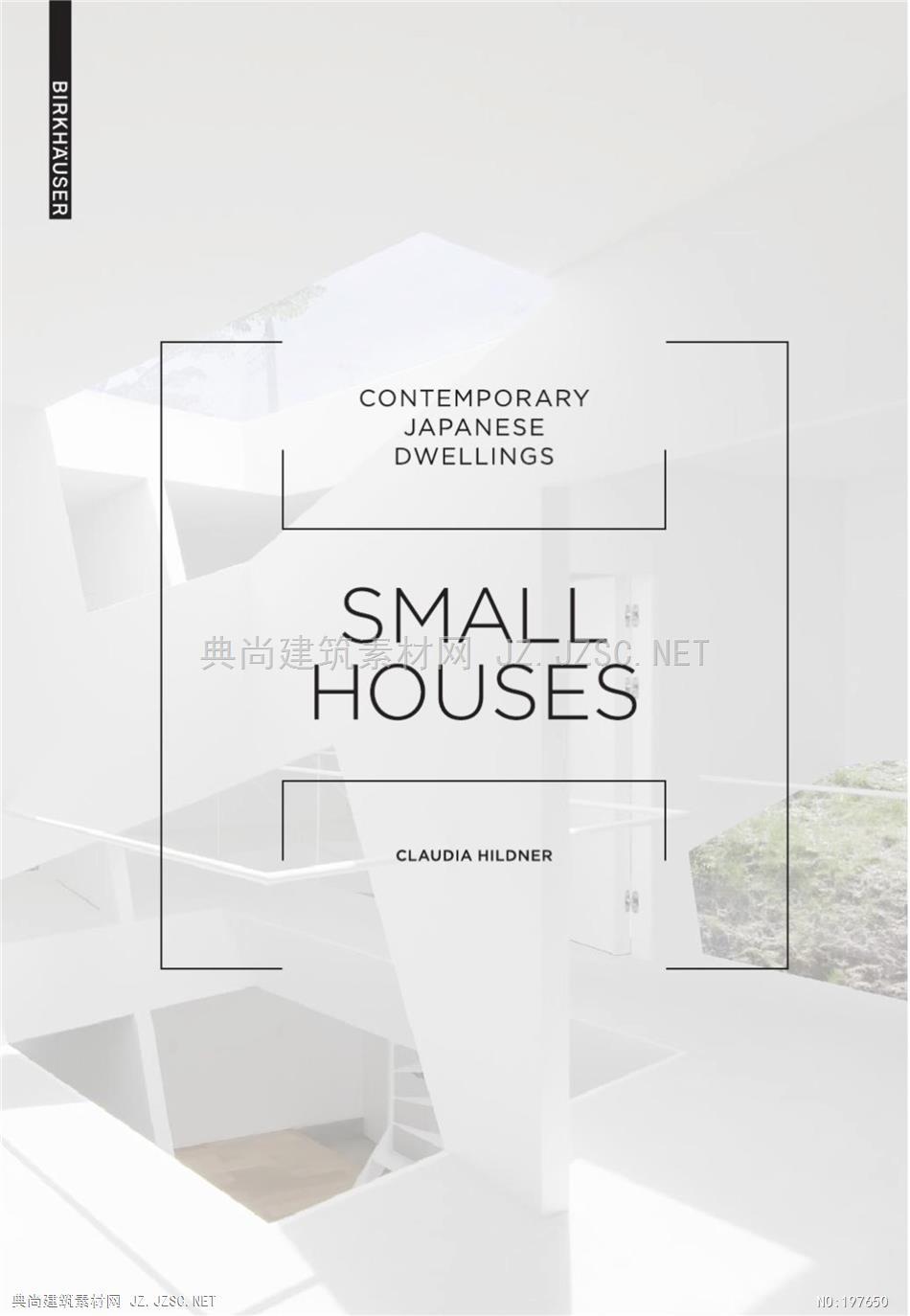
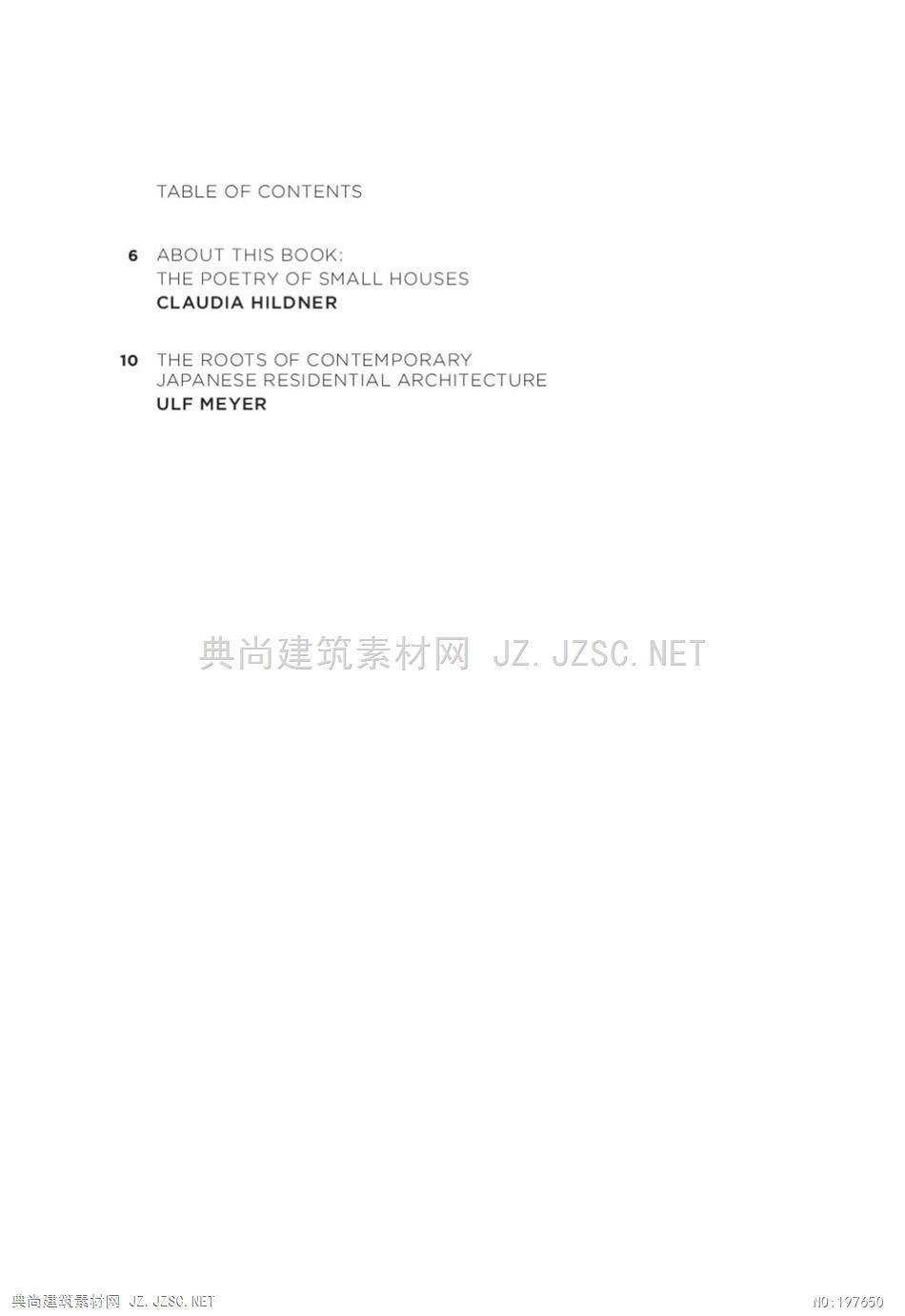


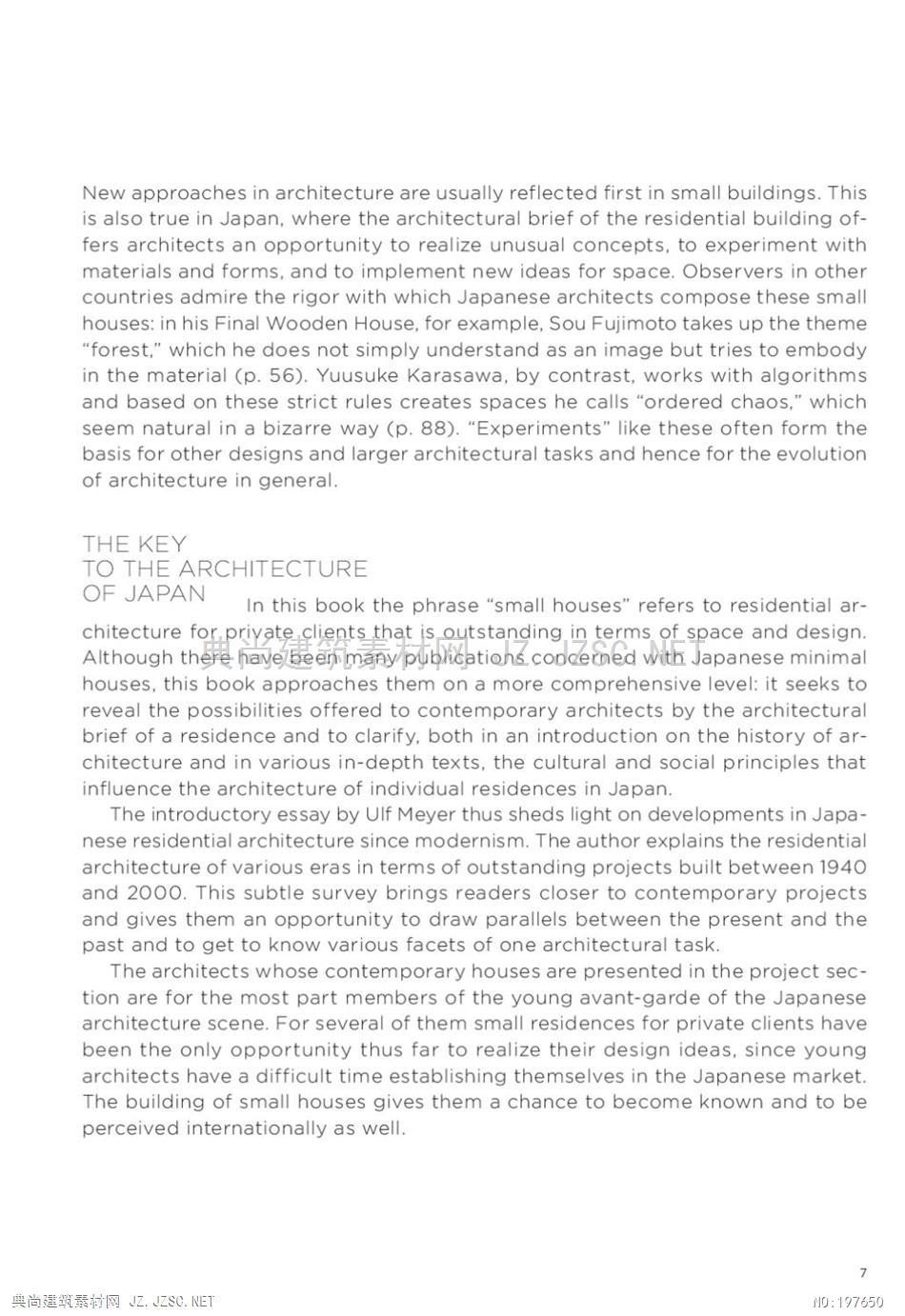
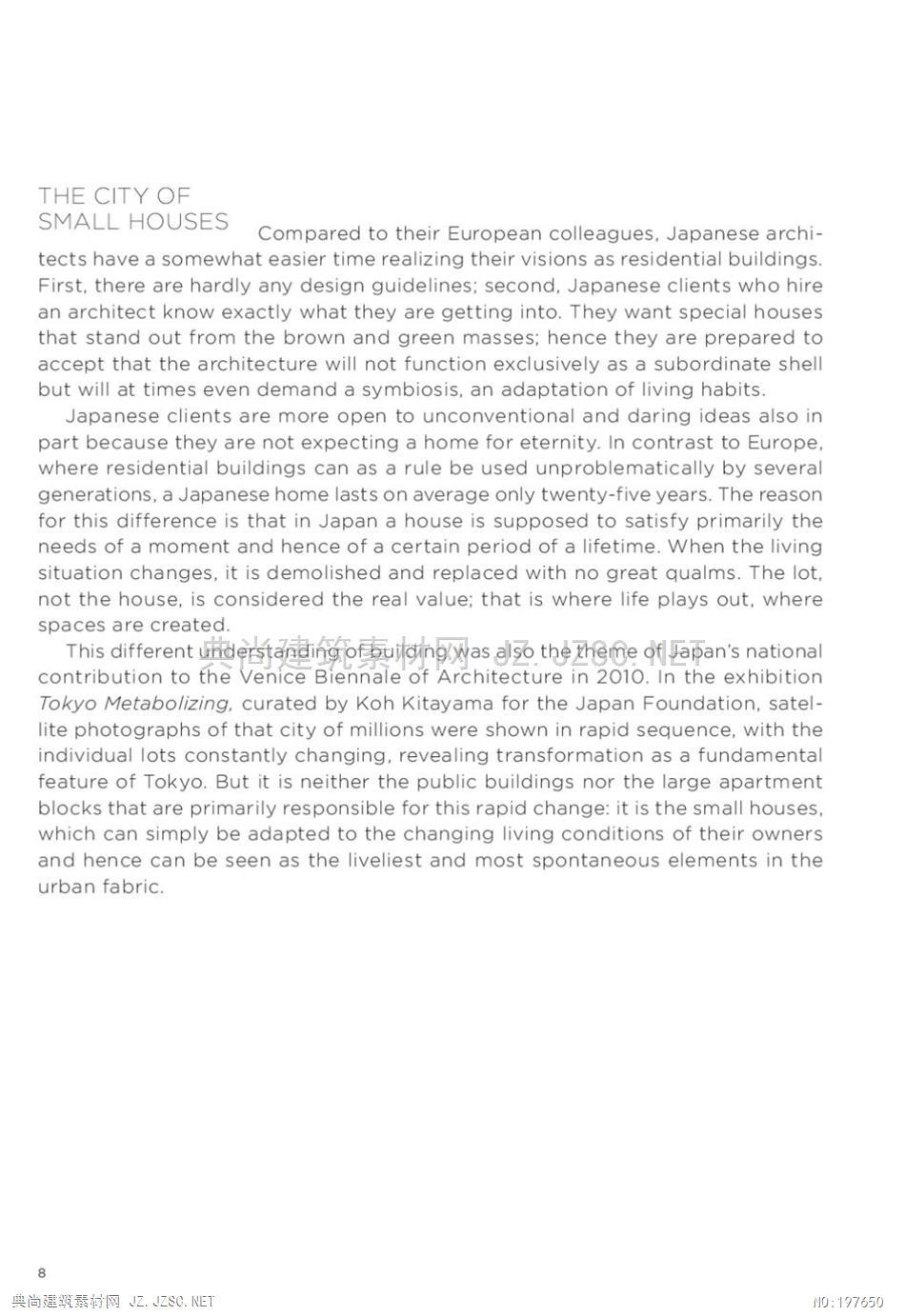
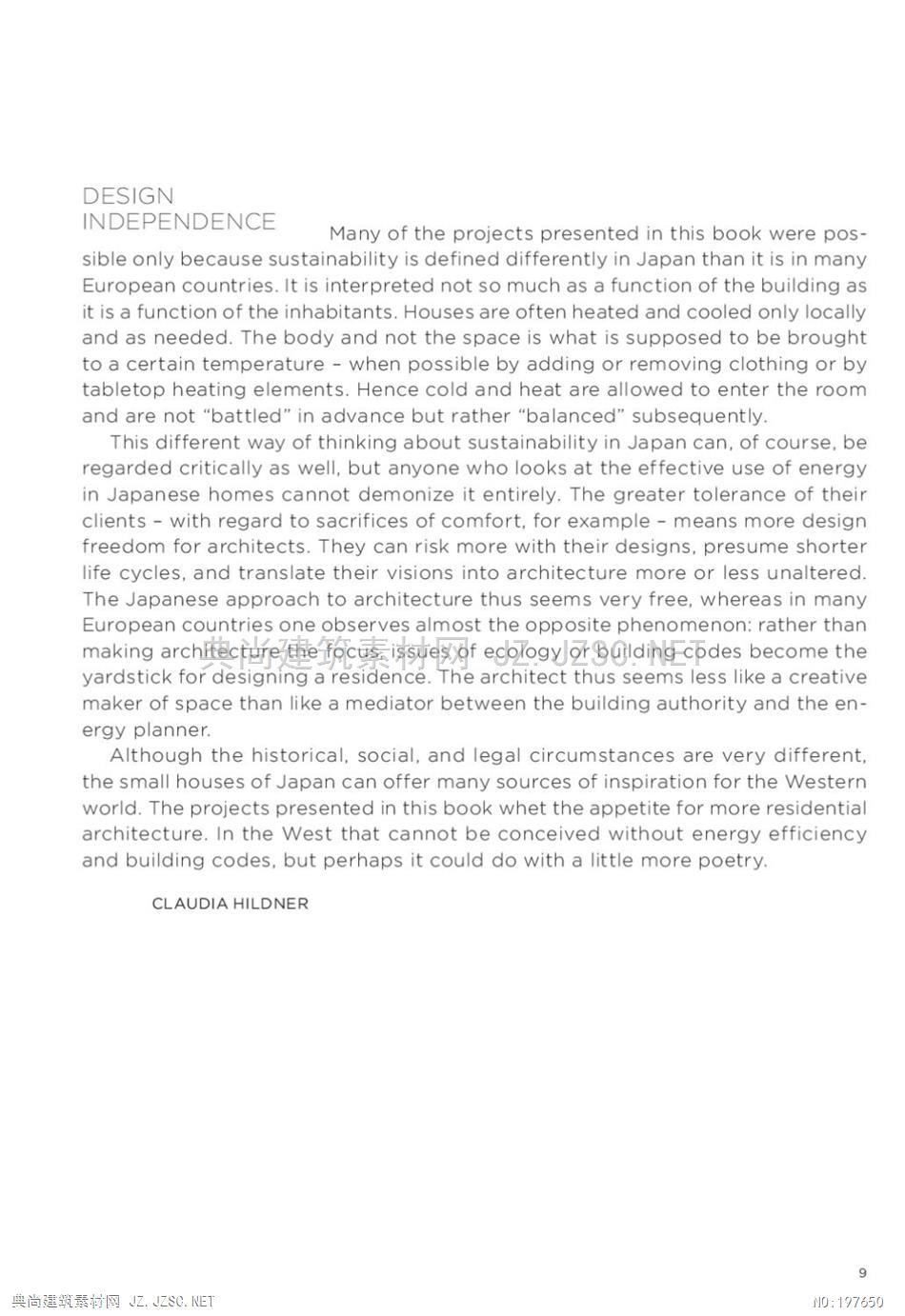

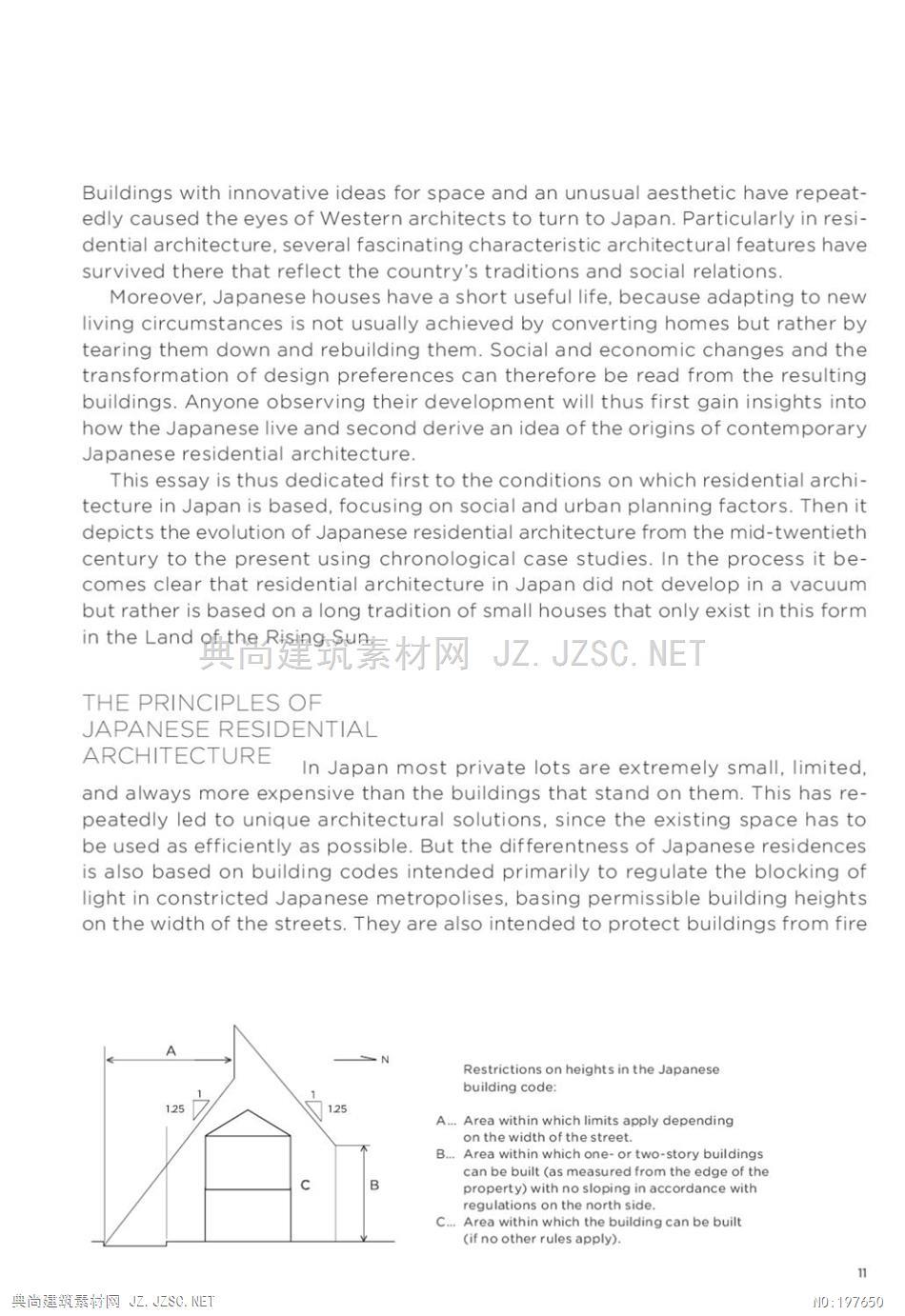
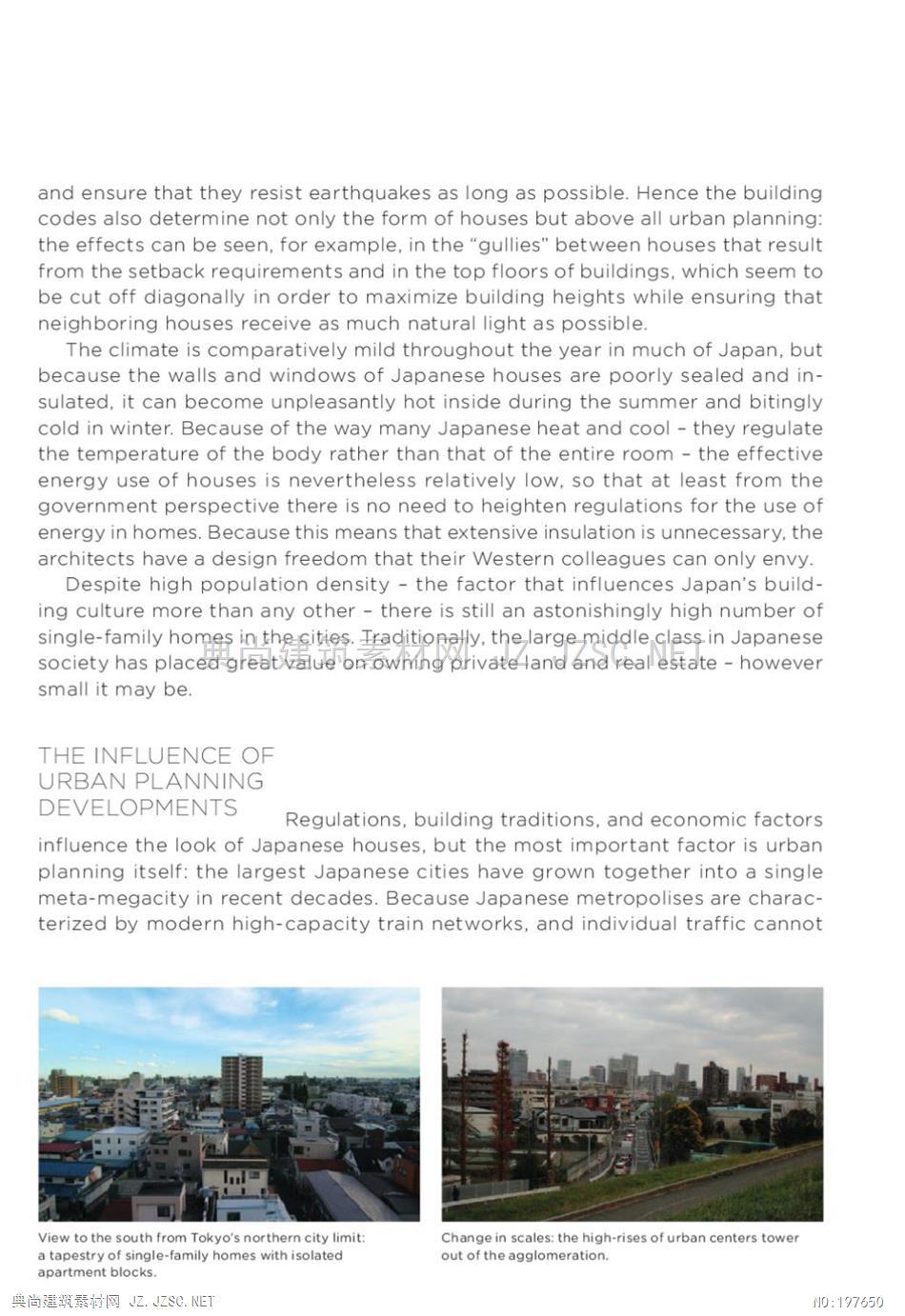
THE CITY OFSMALL HOUSESCompared to their European colleagues.Japanese archi-tects have a somewhat easier time realizing their visions as residential buildings.First,there are hardly any design guidelines;second,Japanese clients who hirean architect know exactly what they are getting into.They want special housesthat stand out from the brown and green masses;hence they are prepared toaccept that the architecture will not function exclusively as a subordinate shellbut will at times even demand a symbiosis,an adaptation of living habits.Japanese clients are more open to unconventional and daring ideas also inpart because they are not expecting a home for eternity.In contrast to Europe,where residential buildings can as a rule be used unproblematically by severalgenerations,a Japanese home lasts on average only twenty-five years.The reasonfor this difference is that in Japan a house is supposed to satisfy primarily theneeds of a moment and hence of a certain period of a lifetime.When the livingsituation changes,it is demolished and replaced with no great qualms.The lot.not the house,is considered the real value:that is where life plays out,wherespaces are created.This different understandin部fbuilging/was al免the theme of历pan's nationalcontribution to the Venice Biennale of Architecture in 2010.In the exhibitionTokyo Metabolizing,curated by Koh Kitayama for the Japan Foundation,satel-lite photographs of that city of millions were shown in rapid sequence,with theindividual lots constantly changing,revealing transformation as a fundamentalfeature of Tokyo.But it is neither the public buildings nor the large apartmentblocks that are primarily responsible for this rapid change:it is the small houses.which can simply be adapted to the changing living conditions of their ownersand hence can be seen as the liveliest and most spontaneous elements in theurban fabric.罚素村阀Z.Z沁.ET and ensure that they resist earthquakes as long as possible.Hence the buildingcodes also determine not only the form of houses but above all urban planning:the effects can be seen,for example,in the "gullies"between houses that resultfrom the setback requirements and in the top floors of buildings,which seem tobe cut off diagonally in order to maximize building heights while ensuring thatneighboring houses receive as much natural light as possible.The climate is comparatively mild throughout the year in much of Japan,butbecause the walls and windows of Japanese houses are poorly sealed and in-sulated.it can become unpleasantly hot inside during the summer and bitinglycold in winter.Because of the way many Japanese heat and cool-they regulatethe temperature of the body rather than that of the entire room-the effectiveenergy use of houses is nevertheless relatively low,so that at least from thegovernment perspective there is no need to heighten regulations for the use ofenergy in homes.Because this means that extensive insulation is unnecessary,thearchitects have a design freedom that their Western colleagues can only envy.Despite high population density -the factor that influences Japan's build-ing culture more than any other there is still an astonishingly high number ofsingle-family homes in the cities.Iraditionally.the large middle class in Japanesesociety has placed greatvalue on owning private land and real estate -howeversmall it may be.THE INFLUENCE OFURBAN PLANNINGDEVELOPMENTSRegulations,building traditions,and economic factorsinfluence the look of Japanese houses,but the most important factor is urbanplanning itself:the largest Japanese cities have grown together into a singlemeta-megacity in recent decades.Because Japanese metropolises are charac-terized by modern high-capacity train networks,and individual traffic cannotView to the south from Tokyo's northern city limit:Change in scales:the high-rises of urban centers towera tapestry of single-family homes with isolatedout of the agglomeration.apartment blocks.罚素衬网Z.Z沁
本站所有资源由用户上传,仅供学习和交流之用;未经授权,禁止商用,否则产生的一切后果将由您自己承担!素材版权归原作者所有,如有侵权请立即与我们联系,我们将及时删除